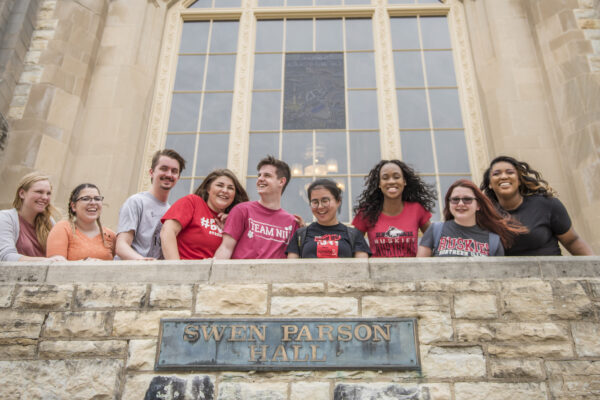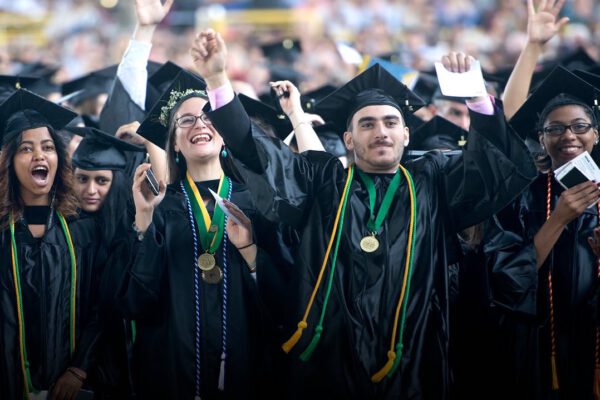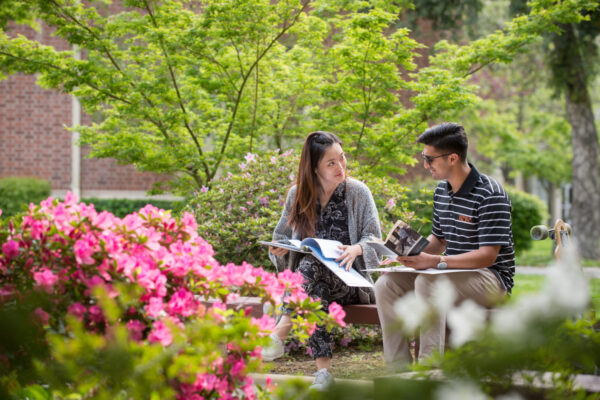I’ve had a lot of conversations in the last couple of weeks about Karin Fischer’s recent article in The Chronicle of Higher Education, “How International Education’s Golden Age Lost Its Sheen.” As Fischer’s pieces always are, it’s a thoughtful discussion that incorporates data and a variety of points of view. But based on the reactions I’ve heard, I’m worried that its more subtle points have been lost behind the “golden” headline.
The past: “Has internationalization only been skin deep?”
The article’s characterization of circa 2013 as internationalization’s “golden moment” centers on international students flocking to U.S. campuses, while institutional leaders traveled the world signing MOUs and setting up outposts. To a degree, data from ACE’s 2017 Mapping Internationalization on U.S. Campuses reinforce the golden moment characterization—nearly three-quarters of institutions reported that internationalization had accelerated on their campuses. And particularly when it comes to student mobility (both inbound and outbound) and international partnerships, the time, energy, and resources devoted to internationalization efforts—as reported in our survey—underscored this assessment.
But let’s take a closer look at the “golden age.” Yes, institutions were making money from incoming international students. But as ACE’s Mapping data illustrate, we weren’t doing such a great job of supporting those students beyond their first weeks on campus. Orientation–yes. Ongoing programs to help them fully integrate into the classroom and institutional life? Not so much. What about outposts abroad? Certainly there are high-profile examples such as New York University in Abu Dhabi and Shanghai and others cited in Fischer’s article, but of the Mapping survey respondents, only around 5 percent maintained a physical presence abroad.
And as Fischer points out, Mapping respondents ranked curriculum internationalization and faculty development as their fourth and fifth priorities for internationalization, behind education abroad, recruiting international students, and partnerships abroad. And indeed, new research by ACE and NSSE shows that curricular and faculty initiatives have the greatest impact on student global learning. But while there were some improvements between 2011 and 2016, data on actual activity reflected a relative lack of attention to these areas.
So just how golden was the golden age? Golden in the sense of revenue, sure. But golden in terms of what we accomplished? As Fischer implies in her conclusion, that’s not so clear.
In the Mapping survey, we asked institutions why they were seeking to internationalize, and the number one reason was “to prepare students for a global era.” With our collective focus on mobility and comparative lack of attention to what was happening on campuses to engage all students and faculty in our global endeavors, how much progress we actually made toward accomplishing our goals is questionable. Golden is, perhaps, in the eye of the beholder. But students and faculty are (or should be) the beholders who matter most, and their interests were not necessarily the drivers of our pre-2016 “golden era” internationalization efforts.
The present: “Some colleges are retrenching, while others try to sustain a global footprint.”
As Fischer points out, stagnating numbers of international students have captured the headlines, along with controversies over Confucius Institutes, widespread foreign language program closures, and an array of issues surrounding foreign outposts. She describes the mood at the winter meeting of the Association of International Education Administrators as “somber,” as participants reflected on the current state of the field.
Among the institutions I work with in ACE’s Internationalization Laboratory, I have seen something else. The Lab cohort meeting in February 2017 was characterized by consternation and angst, but even as the policy roller coaster of the last two years was picking up speed, there was also a sense that we would get through it. Yes, the word “demoralizing” was used, but so was the word “energizing”—and perhaps a feeling that our work was more important than ever.
The energizing sentiment may have been rooted in a sense of opportunity to change things up and redirect, a chance to correct some of the missteps of the so-called golden age. Reflecting on the 2016 Mapping data and prospects for the post-election future, ACE’s report (written in spring 2017) notes, “Some institutions may turn their internationalization focus inward, with increased attention and resources devoted to on-campus curricular, co-curricular, and faculty development initiatives – exactly what is needed to advance progress toward comprehensive internationalization in ways that an exclusive external orientation and on-going emphasis on mobility will not allow.”
Though my evidence is anecdotal, I have been impressed by what I’ve seen along these lines on many campuses since then. Great creativity in leveraging international partnerships to support students protected under the Obama-era Deferred Action for Childhood Arrivals policy. Enhanced support for international students in the visa application process. Efforts to formalize global elements of general education requirements. Collaborative online international learning—COIL—picking up steam as a way to bring opportunities for international collaboration and connections to more of our students. In short, a new or renewed focus on the activities that matter most when it comes to student learning.
Granted, my Lab institutions are not necessarily typical of U.S. higher education. They have leaders who understand internationalization and have committed time and resources to a strategic, comprehensive approach. But these institutions keep coming. We continue to fill a new Lab cohort each year—and the 2019 cohort is on track to fill well ahead of schedule. Momentum continues.
The future: “The end of an era doesn’t necessarily mean that things regress. Maybe they just change.”
Fischer notes that internationalization “is about equipping people to understand and adapt to a more tightly interdependent world,” but that “educating global citizens . . . may not play well with the America First crowd.” True, the need to respond to a globalized world may not resonate in the current political climate. But globalization itself? The train has left the station. The world is increasingly interdependent, and our students need to be prepared for that reality.
Take my husband. Like many Washingtonians, he is a government contractor. He works for a private consulting firm whose primary client is the Federal Aviation Administration. His firm’s specialty is aviation weather—how weather events impact planes and how policies respond to and mitigate these impacts.
Well, weather is a borderless phenomenon. If different countries enact different policies surrounding weather events, passenger safety is potentially compromised. Thus, part of my husband’s work is to convene an international community of experts and policymakers to hash this all out. He is an American, working for an American government agency on American policy. But in his work, he is called on to navigate cultural and linguistic differences, understand underlying political tensions and complexities, and build consensus on controversial international issues. This is—and will continue to be —the reality for our students, whether we, collectively as a nation, like it or not.
So we in higher education need to keep at our internationalization work. But we also need to be smart, deliberate, and articulate about what we’re doing and why. As Hans de Wit and others have argued, we cannot think of internationalization as an end in and of itself. Like UC Davis’s Joanna Regulska suggested to Fischer, in the Internationalization Laboratory, we encourage participants to start their internationalization planning by asking how international efforts and activities further the overall strategy and goals of their institutions. This includes those that overtly reference global activity, but also broader priorities such as diversity and equity, employability of graduates, and top-quality research production.
We also need to do a better job of connecting with our local communities and tying our internationalization efforts to their needs. As I write this, I am on a plane to Duluth, Minnesota, where ACE and the Council for Regional Economic Competitiveness are convening a group of local economic development, business, and higher education leaders for a conversation about how to attract global talent to the region and build its international profile. We need more of these conversations and collaborations in more of our communities.
Finally, we need to be part of the global conversation about higher education internationalization. Yes, we’re dealing with a lot here in the United States, but there’s a whole world out there that we can learn from. Some places, like the U.K., are facing similar challenges. How are they meeting them, and what can we adapt from their approaches? And let’s not reinvent the wheel when it comes to good practices—Australia, for example, has made great strides in supporting international students, while researchers the world over are finding ways to collaborate on cutting-edge projects. There is a lot of expertise that we can tap to further our efforts, even—or particularly—when the going is tough.
In Fischer’s article, my mentor and dissertation advisor Philip Altbach states, “The era of internationalization might be over, or on life support.” I respectfully and collegially disagree. Admittedly, I’m a glass-half-full kind of person. But I really do believe that if we do it right, the golden age of internationalization is not, in fact, behind us, but rather is yet to come. So let’s get back to work—golden moment or not, our students can’t afford for us to stop now.
If you have any questions or comments about this blog post, please contact us.


